Discovering Punic Wax
I want to explain how Coincidental my finding Punic Wax was, this post will be an explanation for anyone looking back wondering how I came across this and put it to use the way I am about to. This can be considered to be an Open Source Claim on the Practice applying Punic Wax to Soap, Paint and Incense, and adding Resins, Gums, Rosins, Oils, Fats and Balsams to Punic Wax, especially when then being added to Soap, Paints and Incense; I want other people to copy this Ancient Technique made new.
"Not only were Moors well versed in it, they were the originators of [Mystery Schools]" - Madame Blavatsky
Boiling Procedure Options, with or without Resins, Gums, Rosins, Oils, Fats and Balsams:
Salt and Baking soda in Water + Beeswax
Ashes + Beeswax
Ashes + Salt and Baking soda in Water + Beeswax
Vibhuti + Salt and Baking soda in Water + Beeswax
With these last 3 boil in stainless steel only (corrosive bases eat many metals, glass, etc), or apply solution to beeswax as in traditional Saponification. Avoid contact with skin, use rubber gloves have vinegar on hand to counteract acid with base.
Sodalime + Beeswax
Potash + Beeswax
Lye + Beeswax
Punic Wax = Saponified Beeswax
First, when I was 14 my Mom gave me a 3,000 Spells Spellbook, this was not in there, but I was raised by a Mother who liked to use Ouija Boards, and Dowsers, she is trained in Reiki, and does Bio-Feedback, etc. I spent more time at Chiroprators as a Child than I can even remember. I have done Accupuncture, Accupressure, NAET, Homeopathy, Bio-feedback, etc, etc. Growing up there were always books about Herbs, Spellbooks and Birthday Astrology Books. I read the Bible at 14, then the Nag Hammadi Scriptures and became Gnostic and began studying Kemetic, Yoruba, and American Religion (Shamanism, Native American Religion, Yaqui, Mazatec, Vudu, Spiritualism, Wicca, etc). I became an Ordained Shaivite Minister at 17, and founded the Shaivite Temple when I was 25.
I have always been attuned to Carthaginian Magic, I am a Shaivite so Worship Shiva, but I am a Polytheist like all Hindus, so I also recognize the Gods of Egypt/Kemet, and particularly the Punics. I look at Imhotep and see a very relatable figure, solving a 7 year famine by reading books while others are reading goat entrails, Inventing Medicine around 3500 BC and saying it only worked with the proper incantation, etc. And Hannibal Barca, a Punic, who worshiped Imhotep in the form of Eshmun, and also worshipped Hercules and his adoptive mother Hera. In fact in Carthage, the God in charge was Female, Tannit; and Tannit's Consort Baal-Hammon, God of Weather and Farming, was the Chief. Queen Dido, or La Reigna Dido (in Spanish), was the Mythical Founder of Carthage, and she was Punic.
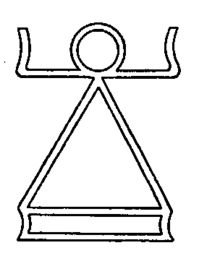
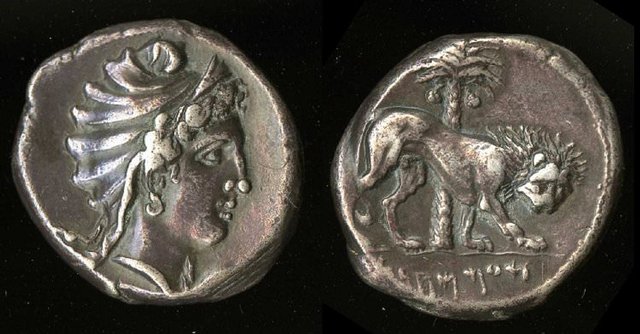
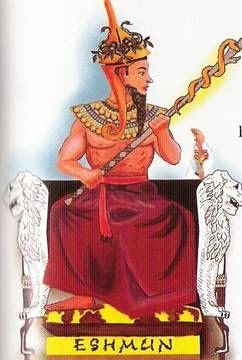
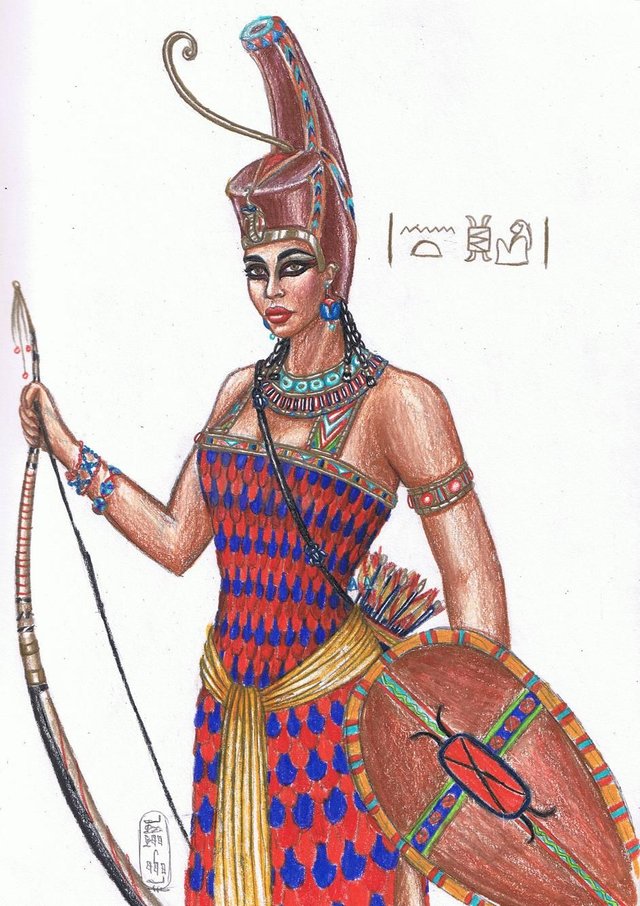
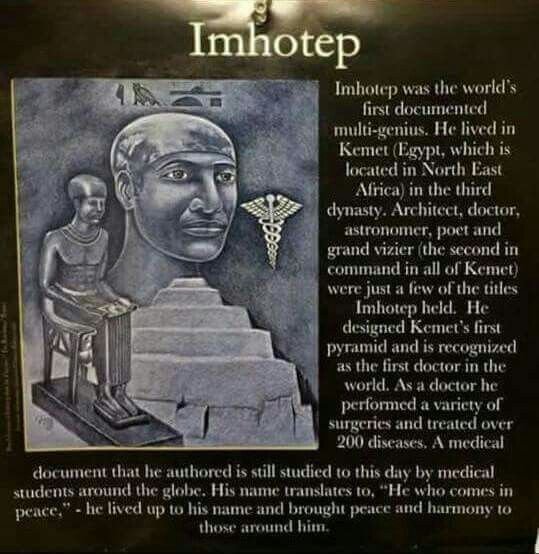
The Punics were at first a great asset to the Phoenicians, and the King of Tyre. Just how the King of Tyre built Solomon's Temple in the Bible, Tyre also created Carthage, and the Punic People existed in Carthage, in the region that is modern day Tunisia, Carthage was generally in the area now called Libya, spanning to Egypt. When the British first came to Libya, the Libyans said that they were Cannanites.
2 Samuel 5:11 "Now Hiram king of Tyre sent envoys to David, along with cedar logs and carpenters and stonemasons, and they built a palace for David."
Carthage was a center of Trade between the Mediterranean and the deeper African Continent, it was the most advanced Civilization before Rome. They had mini-Skyscrapers used like Apartments, Boats that could fare the Ocean and allowed them to rule the Sea, Invented Greek, Arabic, and the other Phoenetic Languages, Invented the Royal Purple, Crimson and Blue Dyes from Conch Shells, the Color is known as Tyrian Purple and the Color is turned Crimson or Blue with Boiling techniques, and they Invented Clear Glass. The Phoenicians are the Greek Phoenix, the Phoenician Culture always rises, it is the Cream. Carthaginian Magic is what Separates the Wheat from the Chaffe.

Which brings us to Punic Wax.
My Wife is starting her Spell Shop, Divine Mystical Expressions where we will be making Soap so I had been studying Saponification, but now I was doing research on Enzymes and Potentiation at the time, regarding new personal research into Kava being done along the lines of Oilahuasca. And I started the process of Discovering Punic Wax by thinking along the lines of chewing gum, and got there by thinking of Frankincense and Mhyyr. So I start the chewing gum enzymes search with Gum Arabic because it is in most chewing gum, and Benzoin Gum.
https://en.m.wikipedia.org/wiki/Benzoin_(resin)
https://en.m.wikipedia.org/wiki/Gum_arabic
https://www.sciencedirect.com/science/article/pii/B9780128120026000063
There was also a Benzoin healing oil that was just Benzoin Gum in Alcohol
https://en.m.wikipedia.org/wiki/Tincture_of_benzoin
This is Australian Gum, probably associated with the Aboriginal Dream Time Culture.
https://en.m.wikipedia.org/wiki/Spinifex_resin
From Ancient Greece
https://en.m.wikipedia.org/wiki/Mastic_(plant_resin)
Then there is Fossilized Resin, which is Amber
https://en.m.wikipedia.org/wiki/Amber
And I found the History of Amber trade in the Pacific Islands
https://en.m.wikipedia.org/wiki/Kauri_gum
And that Amber trade was like the Roman Amber Road
https://en.m.wikipedia.org/wiki/Amber_Road
Which reminded me of the Beaker Cultures
https://en.m.wikipedia.org/wiki/Bell_Beaker_culture
https://en.m.wikipedia.org/wiki/Funnelbeaker_culture
Then there is Dragon's Blood Resin
https://en.m.wikipedia.org/wiki/Dragon%27s_blood
And a Canadian Pine Resin
https://en.m.wikipedia.org/wiki/Canada_balsam
And Dammar Gum
https://en.m.wikipedia.org/wiki/Dammar_gum
Where I find the phrase "Encaustic Paints".
I did a little more research, and there it is, Punic Wax. Like a gift from God. Beeswax, Brine (Salt Water and Baking Soda) and Ashes (Potash/Potassium Hydroxide), mixed with Pigment.
So we are Resurrecting Punic Wax, creating new Versions, and adding it to Soap.
Punic wax: 150 g Pure Beeswax (Allbӓck, used as purchased - see above) boiled repeatedly in artificial 'seawater' prepared using 42 g sodium chloride (S7653 from Sigma-Aldrich, UK) in 1200 mL water with 30 g of sodium bicarbonate (S5761 from Sigma-Aldrich, UK).
"In a process developed by KREIDEZEIT the bleached wax is saponified with potash so that it is partly water soluble and easy to apply" -KREIDEZEIT
https://patents.google.com/patent/FR2559778A1/en
"Process for the preparation of Punic wax from desert and steppe grass. Yellow wax dust (cuticle dust) of these grasses is boiled in saturated brine in the presence of sodium hydroxide powder. The white pasty wax mass obtained at the surface of the liquid is cooled abruptly in cold water and purified by boiling in water containing iron oxide and by cooling in pure water. This wax is then bleached in the sun. In order to have a white-coloured wax which has a high melting temperature and which has characteristics closely related to those of Punic wax of ancient times, the purified and bleached wax is subjected to a reactive cooking in the presence of a metal catalyst. After cooling of the wax the catalyst is separated off by subjecting the wax to boiling in water followed by bleaching in the sun."
https://patents.google.com/patent/DE202006013438U1/en
"Coating, adhesive and impregnating agent (or also "Punic milk"), especially building and restoration material, containing so-called "Punic wax" of at least beeswax, potash (potassium carbonate) and water, also contains sodium water-glass (sodium silicate). Coating, adhesive and impregnating agent (or also "Punic milk"), especially building and restoration material, containing so-called "Punic wax" of at least beeswax, potash (K 2CO 3) and water (H 2O), also contains sodium water-glass (Na 2SiO 2 (sic))."
http://www.abstractpaintings.com/encaustic.html
"In the 20th century, painter Fritz Faiss (1905-1981), a student of Paul Klee and Wassily Kandinsky at the Bauhaus, together with Dr. Hans Schmid, rediscovered the so-called "Punic wax" technique of encaustic painting. Faiss held two German patents related to the preparation of waxes for encaustic painting. One covered a method for treating beeswax so that its melting point was raised from 60 degrees Celsius to 100 degrees Celsius (from 140 to 212 °F). This occurred after boiling the wax in a solution of sea water and soda three successive times. The resulting, harder wax is the same as the Punic wax referred to in ancient Greek writings on encaustic painting."
Cuní, Jorge & Cuni, Pedro & Eisen, Brielle & Savizky, Ruben & Bové, John. (2012). Characterization of the binding medium used in Roman encaustic paintings on wall and wood. Anal. Methods. 4. 659-669. 10.1039/C2AY05635F. "The characterization by means of Attenuated Total Reflectance Fourier Transform Infrared Spectroscopy and Gas Chromatography-Mass Spectrometry of the binding medium present in eight samples of Roman wall paintings coming from three archaeological sites in Spain and a sample of a Roman-Egyptian mummy portrait on wood showed strong evidence that the medium in all the studied samples was composed of beeswax and soap. These results suggest for the first time that Roman artists used in wall and easel paintings a water soluble encaustic paint of beeswax and soap. Experimental studies with a wax-and-soap technique showed that this painting technique allows reproduction of the physical characteristics of many Roman-Egyptian encaustic mummy portraits with greater accuracy than the hot wax encaustic paint and the alkali-treated encaustic paint often considered to be the painting techniques used in these portraits. Wax-and-soap encaustic also showed greater accuracy in reproducing the physical characteristics of Roman wall paintings than the fresco painting technique, generally thought to be the technique used to execute such paintings. This study suggests that wax-and-soap encaustic could be a common painting technique among Roman artists, and its composition could correspond to a lost ancient encaustic formulation searched for the last five centuries by many artists and researchers dissatisfied with the former reconstructions of the ancient encaustic painting technique."
Arie, Eran & Rosen, Baruch & Namdar, Dvory. (2020). Cannabis and Frankincense at the Judahite Shrine of Arad. Tel Aviv. 47. 5-28. 10.1080/03344355.2020.1732046. "Two limestone monoliths, interpreted as altars, were found in the Judahite shrine at Tel Arad. Unidentified dark material preserved on their upper surfaces was submitted for organic residue analysis at two unrelated laboratories that used similar established extraction methods. On the smaller altar, residues of cannabinoids such as Δ⁹-teterahydrocannabinol (THC), cannabidiol (CBD) and cannabinol (CBN) were detected, along with an assortment of terpenes and terpenoids, suggesting that cannabis inflorescences had been burnt on it. Organic residues attributed to animal dung were also found, suggesting that the cannabis resin had been mixed with dung to enable mild heating. The larger altar contained an assemblage of indicative triterpenes such as boswellic acid and norursatriene, which derives from frankincense. The additional presence of animal fat―in related compounds such as testosterone, androstene and cholesterol―suggests that resin was mixed with it to facilitate evaporation. These well-preserved residues shed new light on the use of 8th century Arad altars and on incense offerings in Judah during the Iron Age."
Hi @punicwax you're into ancient wisdom too? I think most of what you learned are from Hermetic Studies. Currently I'm learning from this site https://www.light.org/brotherhood-of-light-lessons.cfm for my Hermetic Studies, I think you will be interested to explore about their teaching too. Nice to meet you on steemit.
Just now saw this. Yes, I am going to be putting a lot of Ancient information up, and was recently given Punic Wax by the Gods.
I will check out the site.